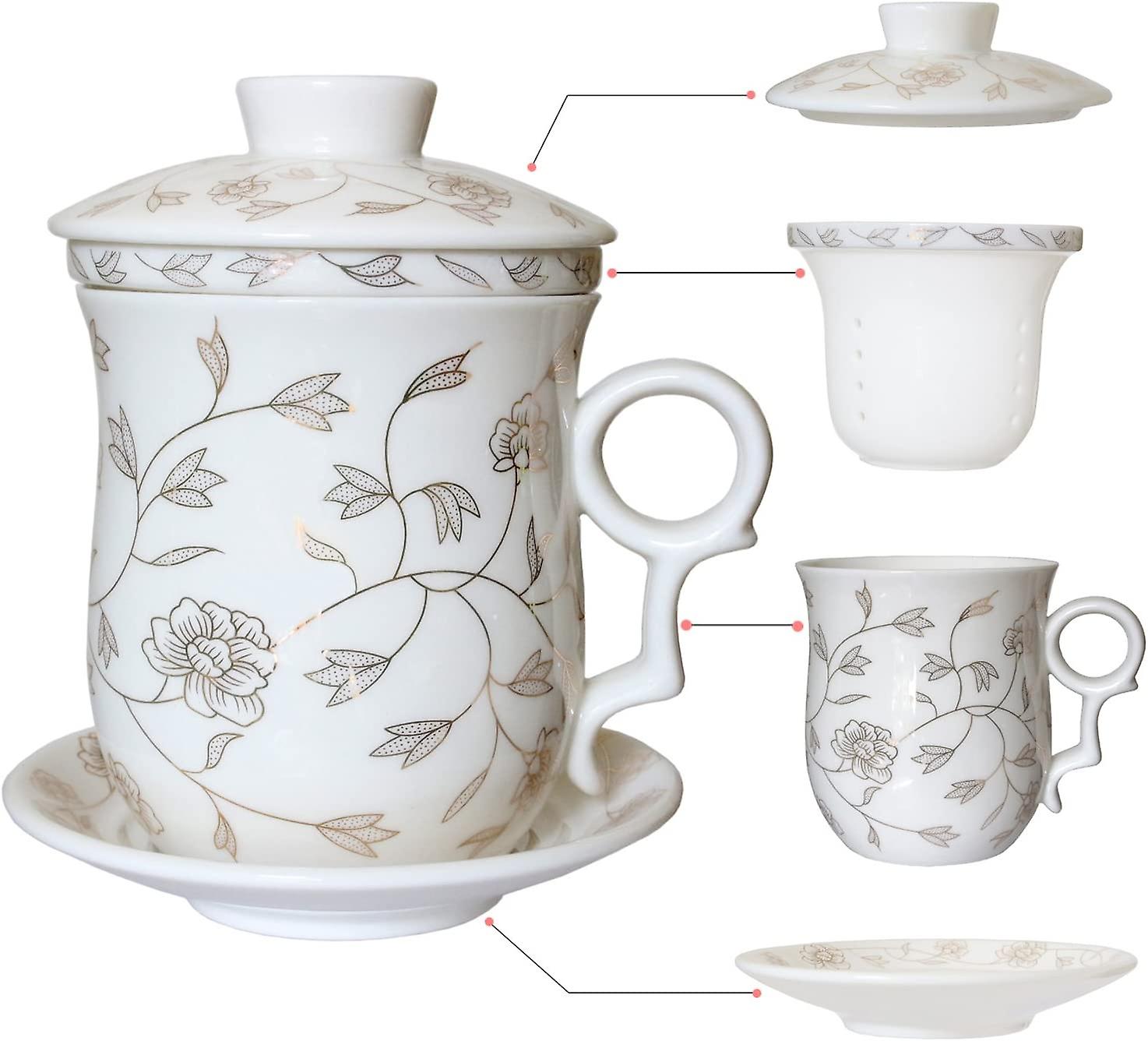Chinese tea culture is renowned for its rich history and intricate rituals, and one of the intriguing elements that captivates enthusiasts worldwide is the use of lidded tea cups. These cups, often adorned with delicate designs and crafted from various materials, serve both practical and symbolic purposes.
In this comprehensive exploration, we will delve into the historical roots, cultural significance, and functional aspects of why Chinese tea cups frequently come with lids.
Historical Roots:
To understand the prevalence of lidded tea cups in Chinese tea culture, it is essential to trace their historical roots. Tea-drinking in China dates back thousands of years, evolving from medicinal practices to becoming an integral part of social and cultural life. The use of lidded cups can be linked to the Tang and Song dynasties (618–1279 AD), when tea culture began to flourish.
During this period, tea preparation and consumption became more sophisticated, with an emphasis on the sensory experience. The addition of lids to tea cups was likely influenced by a desire to preserve the aroma and temperature of the tea. It is noteworthy that these lids were not initially attached but were separate pieces, serving as makeshift saucers to hold the hot lids when not in use.
Cultural Significance:
Chinese tea culture is deeply intertwined with philosophy, spirituality, and aesthetics. The lidded tea cup, with its multi-faceted significance, plays a pivotal role in this intricate cultural tapestry.
- Preservation of Aroma:
One of the primary functions of the lid is to retain the delicate aromas of the tea. Chinese teas, especially high-quality varieties, boast nuanced fragrances that contribute significantly to the overall tea-drinking experience. The lid helps trap these aromatic vapors, allowing the drinker to savor not only the taste but also the complex and evolving scents of the tea. - Temperature Control:
The lid acts as a natural insulator, helping to keep the tea at an optimal temperature. This is particularly crucial for teas that require specific brewing conditions. By retaining heat, the lidded cup ensures a consistent and enjoyable drinking temperature throughout the session. - Symbolism of Respect:
In Chinese culture, the act of covering a cup with a lid can be seen as a gesture of respect. When offering tea to others, placing the lid on the cup is a way of expressing care and consideration for the recipient. It signifies the intention to preserve the freshness of the tea and present it in the best possible condition. - Connection to Gongfu Cha:
Gongfu Cha, often translated as the “art of tea making,” is a traditional Chinese tea ceremony characterized by meticulous preparation and presentation. Lidded cups find a natural place in Gongfu Cha, where the focus is on extracting the full potential of each tea through multiple infusions. The lid facilitates precise control over steeping times and helps enhance the concentration of flavors.
Functional Aspects:
Beyond the symbolic and cultural dimensions, lidded tea cups serve practical purposes that contribute to the overall enjoyment of tea.
- Preventing Heat Loss:
As mentioned earlier, the lid acts as a thermal insulator, preventing the dissipation of heat from the tea. This is particularly beneficial for teas that require higher brewing temperatures or for those who prefer to savor their tea slowly over an extended period. - Steeping Control:
The lid provides control over the steeping process, especially in Gongfu Cha. By covering the cup during steeping, the brewer can regulate the infusion time and extract the desired flavors without over-brewing the tea. - Drip Prevention:
Some lidded tea cups are designed with a slight protrusion on the underside of the lid, creating a drip-catching feature. This not only prevents spills but also adds an element of practicality to the overall design. - Versatility:
Lidded tea cups are versatile and suitable for various types of teas. Whether brewing delicate green teas that require lower temperatures or robust black teas that benefit from extended steeping, the lidded cup adapts to different styles of tea preparation.
Evolution of Lidded Tea Cups:
Over the centuries, lidded tea cups have evolved in design, materials, and usage. While traditional designs often feature porcelain cups with fitted lids, contemporary variations include cups made from various materials such as glass, ceramic, and even Yixing clay. Modern tea enthusiasts may also find lidded cups with innovative features, such as double-walled construction for improved insulation or integrated infusers for convenience.
This evolution highlights the adaptability of lidded tea cups to changing preferences and lifestyles while maintaining a connection to the historical and cultural roots of Chinese tea culture.
Conclusion:
In conclusion, the prevalence of lidded tea cups in Chinese tea culture is a testament to the intricate blend of practicality, symbolism, and cultural significance within the world of tea. From their historical origins in the Tang and Song dynasties to their continued relevance in modern tea ceremonies and everyday use, lidded tea cups have stood the test of time.
These cups serve as vessels not just for tea but also as carriers of tradition, respect, and the artistry inherent in Chinese tea culture. The combination of functional design, symbolic gestures, and adaptability to evolving preferences makes lidded tea cups an enduring and cherished element of the broader tapestry of Chinese tea traditions. As tea enthusiasts around the world embrace the diversity of tea culture, the lidded tea cup remains a tangible and meaningful link to the rich heritage of Chinese tea rituals.
